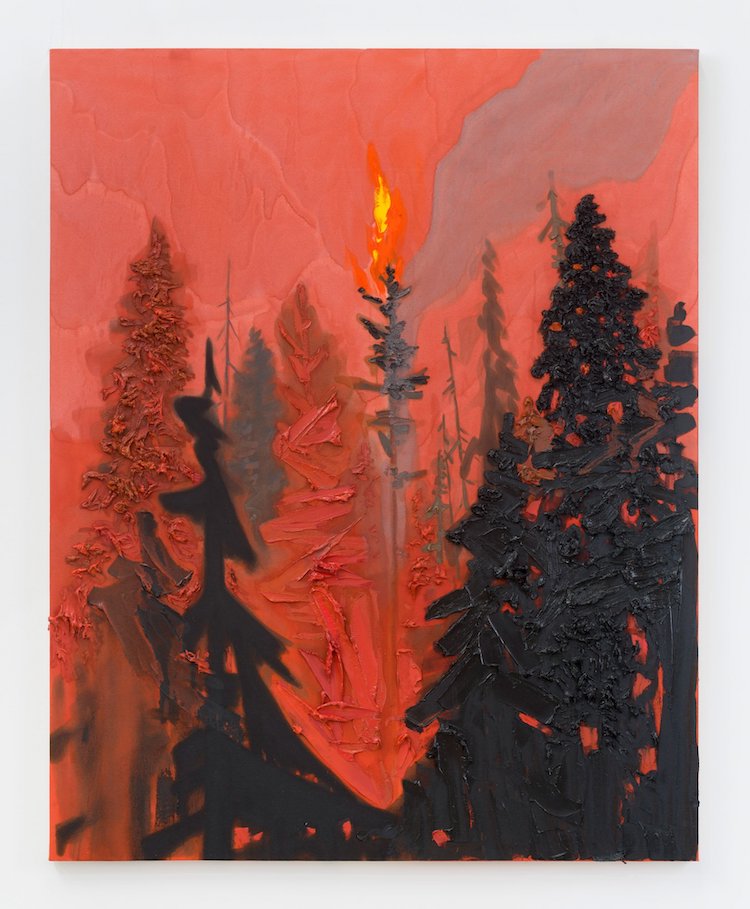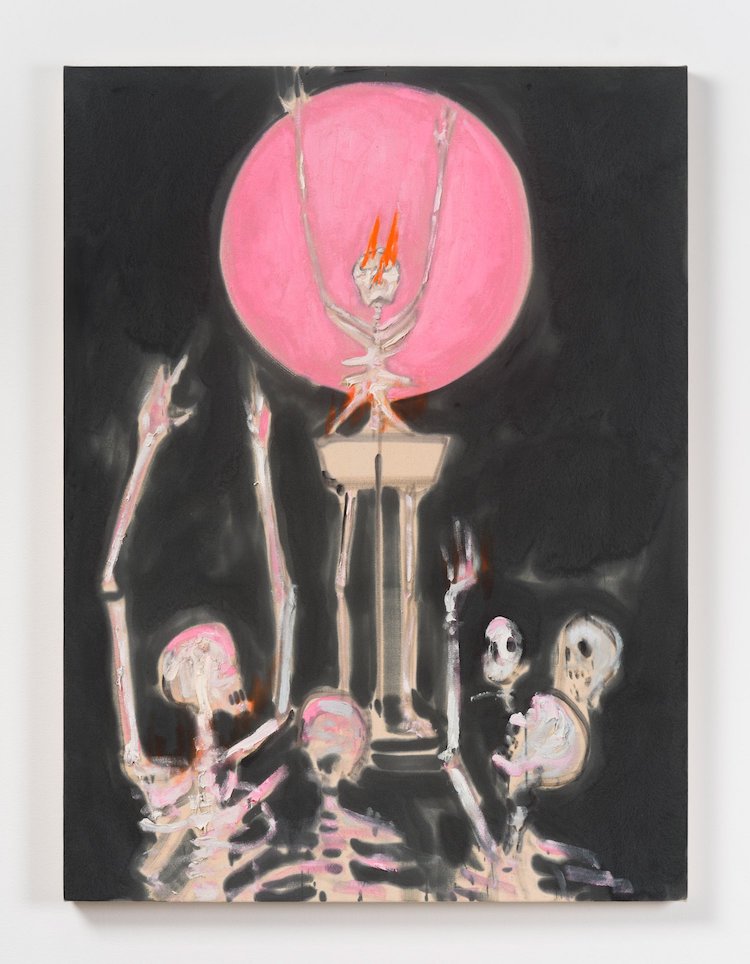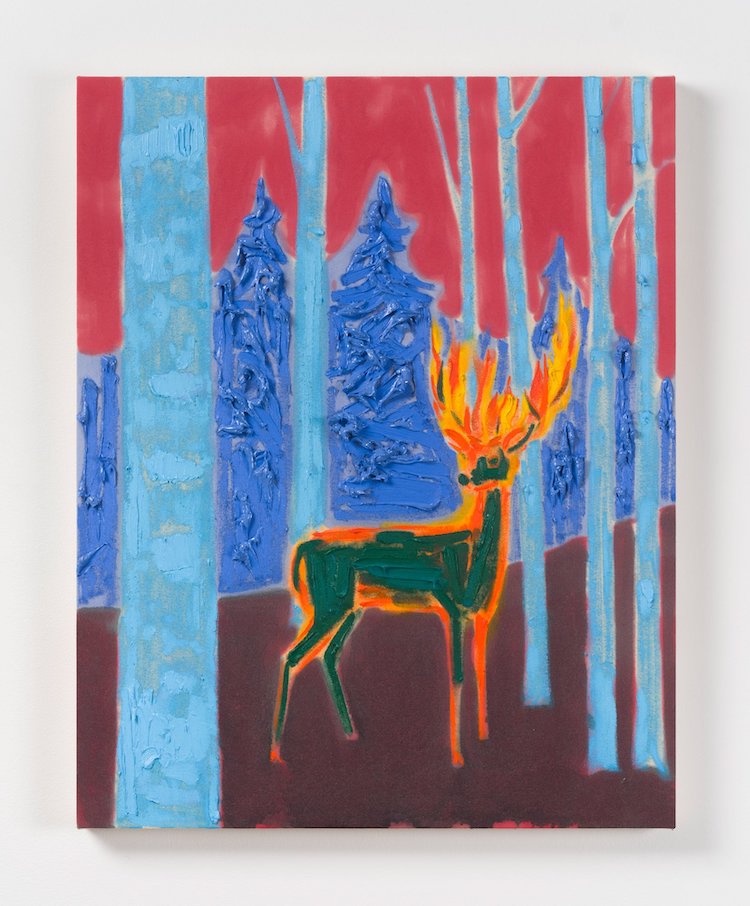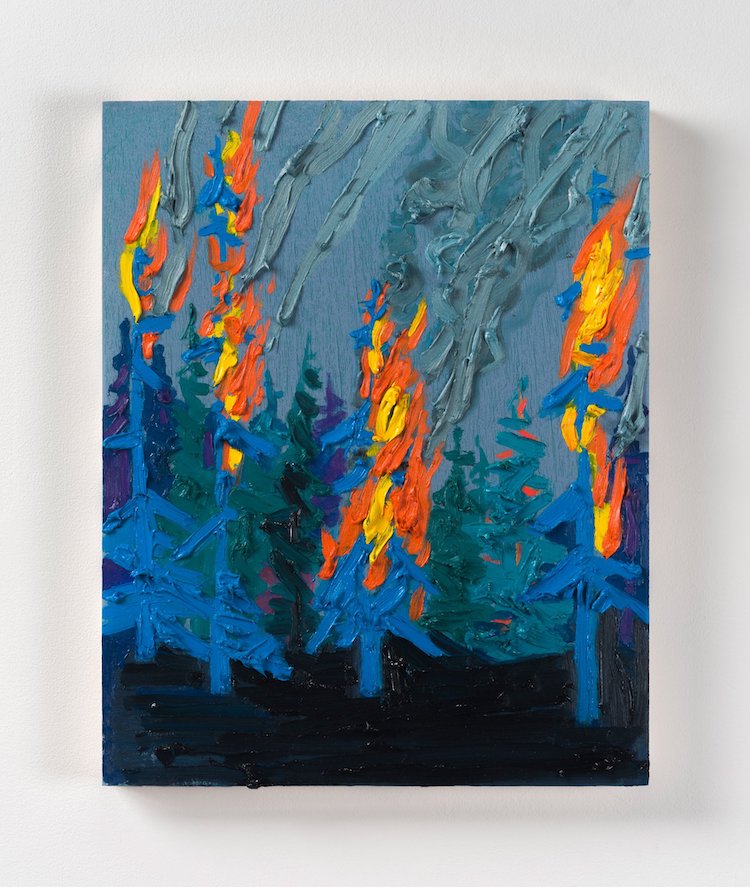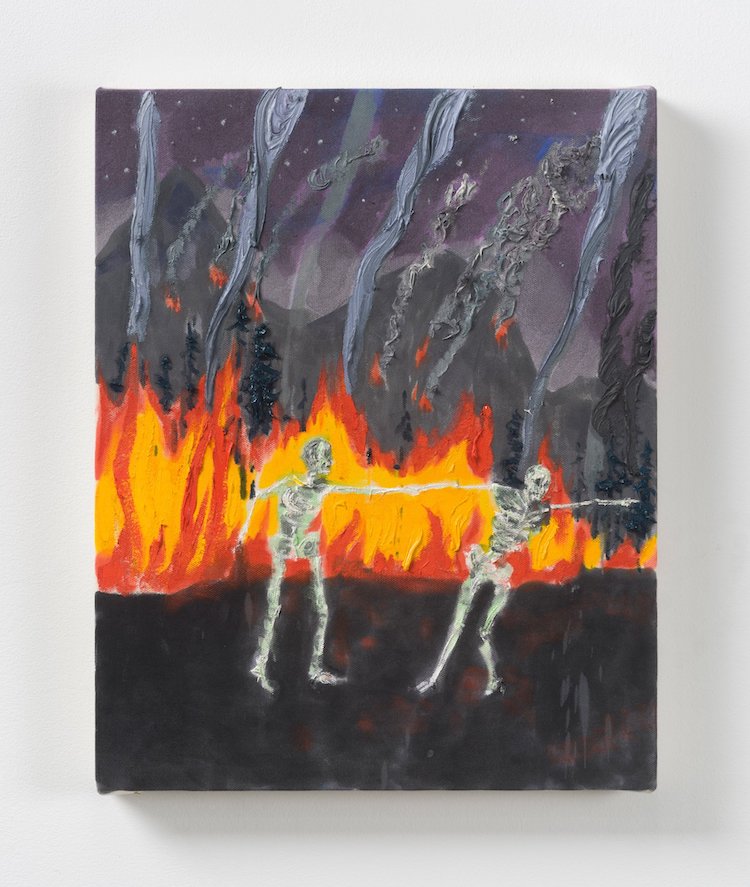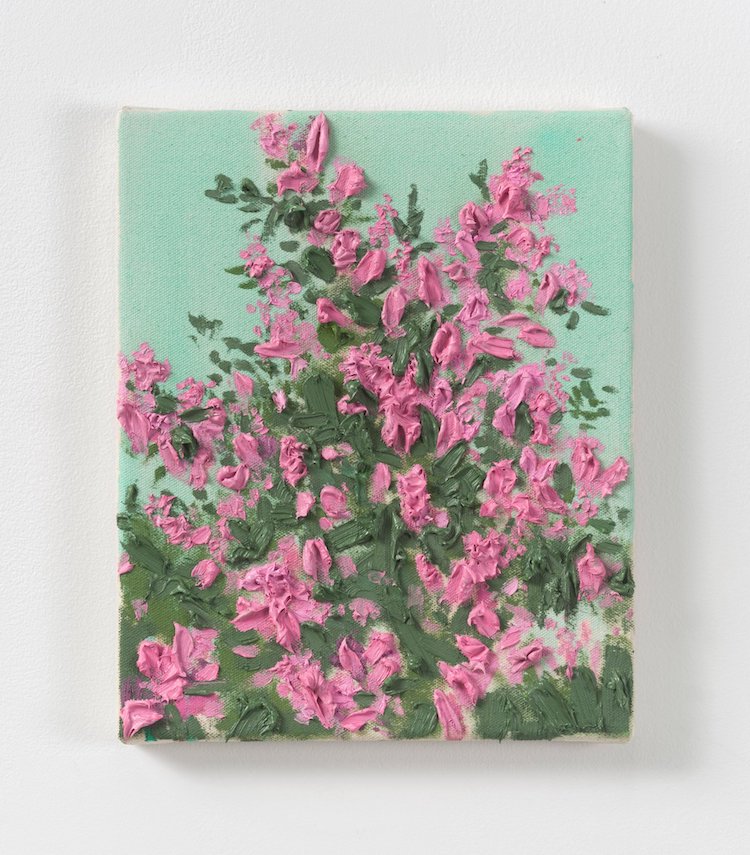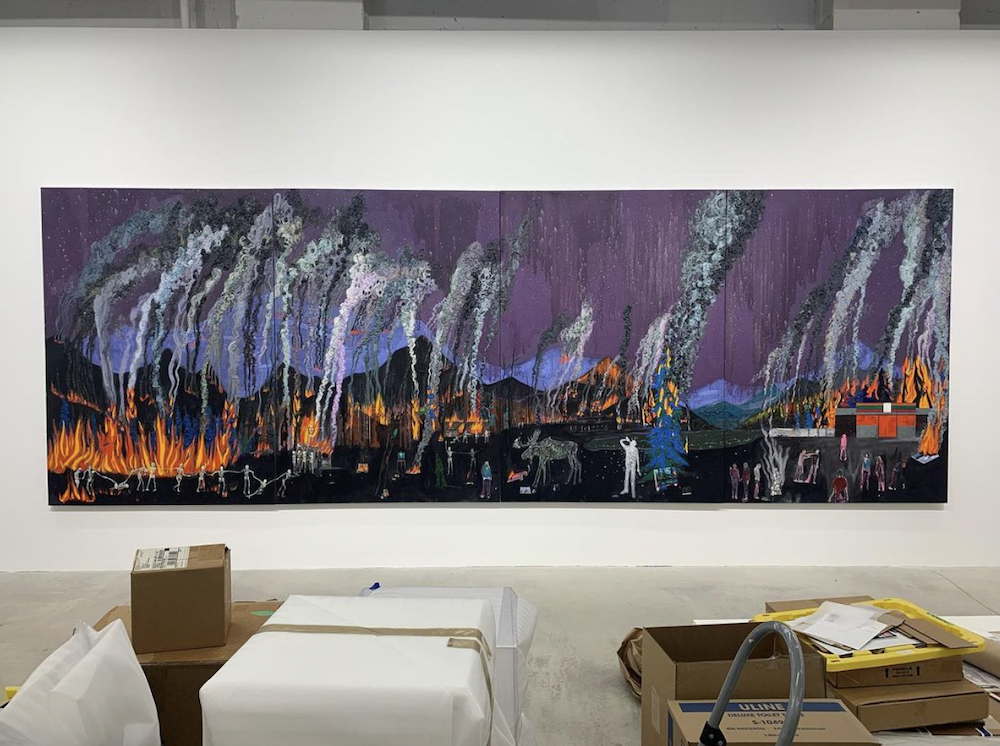It’s the end of September 2022 and I’m standing with Kim Dorland in his studio. It’s exactly what you would expect Kim Dorland’s studio to look like. Lots of paint, art everywhere. It smells good in here. On the central wall hangs the massive centerpiece of this exhibition, Where are all the protest songs? The painting answers this question. They are all here, all of those songs - in this work. It’s the longest song on the album, it’s Dylan’s “Blowin’ in the Wind”, Zeppelin’s “Stairway to Heaven”, except it’s way darker. Every gesture, image, vignette, crevice, explosion on the four canvases answers this question.
What is a landscape artist left to paint when we’ve burned, bulldozed, plowed, flooded or paved over all the landscapes? This painting might be the answer to that question too. One could call this work apocalyptic, it's undeniably macabre in places and some of the imagery terrifying, but that would overlook another energy that runs through the work. The energy of an artist grappling with what the future holds, for him, his family, his world.
When I see the painting, it’s not finished. There are pieces of tape in places where Dorland has scrawled, ‘fix’, ‘bridge’ or other notes to himself. Surveying the room, there are many smaller works on walls, in boxes, or leaning together waiting to get shipped out. Several key themes emerge in this body of work, the most urgent is that the artist’s world is burning up, everything is on fire. Blackened trees are engulfed in vivid flames, skeletons clasp hands in an attempt to escape the inferno. Yet, Dorland takes us by surprise, because it’s not all dark. There are portraits of Lori, the intense impasto that comprises her face, is, to Dorland, her actual face, layered, complex and beautiful. There are nocturnes with lush landscapes under skeleton moons and verdant trees with layers so dense and so green you want to reach out and touch them.
Dorland and I know each other because we support a number of charitable organizations with our work and our time, specifically environmental causes like water. Many times, each year I’m standing before a room full of people taking bids on a painting he has donated. This artist cares deeply about his community and his world.
So, I’m left in question: If it’s all over and we are destined to burn up in the hell we’ve created, why be in any way hopeful? Why bother with this grand gesture or even these small loving tableaus? Maybe all you can do is write a protest song, maybe it’s the most important thing you will ever do. —Stephen Ranger
https://www.patelbrown.com/



